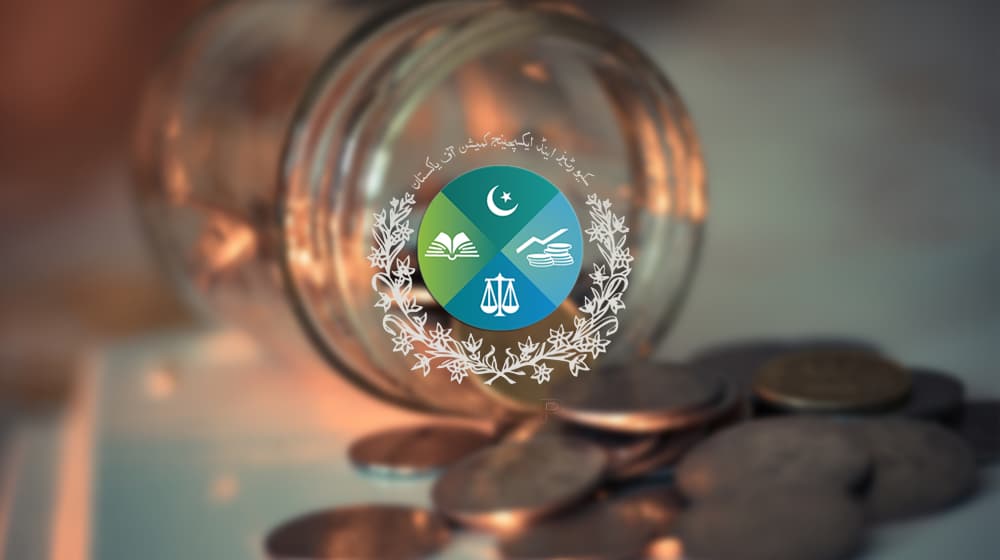Finance Division spokesman clarifies reports on external debt situation

MG News | August 03, 2017 at 09:37 AM GMT+05:00
A section of media has carried reports that the present Government in four years period has added a whopping US$35 billion to external debt of the country.
The reports further state that Pakistan’s total external debt has reached US$79.2 billion by June 2017 and that loans amounting to US$10.1 billion were obtained in a single year during the last year. The reports have highlighted sharp increase in debt servicing during 2016-17 which would increase to US$7 billion. According to these reports debt servicing was US$5.4 billion in 2014-15, US$5.31 billion in 2015-16, and would increase to US$7 billion during 2016-17. These reports also state increase in borrowing cost to the Government.
It is clarified that the debt numbers quoted in these reports are based on incorrect information. The figure of US$79.2 billion is a mere projection and includes private sector external debt and liabilities as well. The actual external public debt as of end-March 2017 is US$58.4 billion and not US$79.2 billion.
The said news reports have tried to sensationalize the debt situation by stating that US$35 billion has been added to Pakistan’s debt during the last four years. This is grossly wrong and misleading. Nominal increase in external public debt as of end-March 2017 is only US$10.3 billion averaging at US$2.57 billion per annum. The reports have also incorrectly stated that US$10 billion loans were taken during 2016-17. In fact, the net increase in external public debt in 2016-17 till end-March 2017 was only US$0.7 billion.
The media reports are also totally misleading with regard to external debt servicing obligations of the Government of Pakistan. The actual external public debt servicing stood at US$4.5 billion in 2014-15, US$4.3 billion in 2015-16, and is projected to be US$5.5 billion by end-June 2017 as against US$7 billion being claimed in the media reports.
The average cost of external loan portfolio as of end-March 2017 is 2.15% p.a. which is significantly lower than the cost of domestic financing. Thus cost of external debt is not only economical but also dominated by long term funding.
It is highlighted that external debt sustainability has increased substantially during the last four years supported by a prudent debt management policy and macroeconomic stability. Debt sustainability analysis carried out recently by an international development partner shows that external debt would remain on a downward trend over the medium term staying well below the risk assessment benchmarks.
The increased sustainability of external public debt is evident from the fact that the “Share of external loans maturing within one year” has been reduced from 68.5 percent of official reserves at the end of June 2013 to 31.9 percent at the end of December 2016 showing improvement in foreign exchange stability and repayment capacity. Furthermore, credit rating agencies in their recent reports acknowledged the fact that Pakistan external debt is on sustainable path.
Out of total public debt, external debt constitutes only 29 percent as of end-March 2017. Within total external debt, the largest component is multilateral and bilateral concessional debt, which constitutes 87 percent. Loans from multilateral and bilateral development partners are primarily aimed at removing structural bottlenecks in the economy. These loans, being concessional and long term, strengthen the debt repayment capacity of the country.
Besides, these loans support implementation of structural reforms in the area of energy, taxation, doing business, trade facilitation, education and public sector enterprises. These loans are dominated by long term maturities and, therefore, do not add to debt payment vulnerabilities. Furthermore, these concessional external loans have been used to retire relatively more expensive debt.
As of end-June 2013, the SBP foreign exchange reserves were around US$6 billion, out of which US$2.25 billion were through short term FX swap with a friendly country maturing in less than 60 days. Therefore, practically SBP’s true FX reserves were only US$3.75 billion as at end-June 2013.
The total reserves of the country as of 30th June 2013 were US$11.02 billion. As of 21st July 2017, SBP foreign exchange reserves were US$15.002 billion while the total FX reserves of the country stood at US$20.436 billion. Thus Pakistan’s FX reserves continue to remain at a healthy level and exchange rate remains stable.
It would therefore be prudent that due caution is exercised while reporting on key indicators of economy as any misreporting based on incorrect numbers can potentially damage perceptions with regard to positive outlook of the economy as well as investors’ confidence. This is necessary to protect the hard earned economic gains achieved over the last four years and to carry the growth trajectory of the economy forward.
Related News
| Name | Price/Vol | %Chg/NChg |
|---|---|---|
| KSE100 | 135,939.87 307.74M |
-0.41% -562.67 |
| ALLSHR | 84,600.38 877.08M |
-0.56% -479.52 |
| KSE30 | 41,373.68 101.15M |
-0.43% -178.94 |
| KMI30 | 191,069.98 82.45M |
-1.17% -2260.79 |
| KMIALLSHR | 55,738.07 422.01M |
-1.03% -577.24 |
| BKTi | 38,489.75 45.79M |
-0.02% -8.33 |
| OGTi | 27,788.15 6.87M |
-1.24% -350.24 |
| Symbol | Bid/Ask | High/Low |
|---|
| Name | Last | High/Low | Chg/%Chg |
|---|---|---|---|
| BITCOIN FUTURES | 116,725.00 | 120,695.00 116,090.00 |
-3510.00 -2.92% |
| BRENT CRUDE | 68.81 | 69.41 68.60 |
-0.40 -0.58% |
| RICHARDS BAY COAL MONTHLY | 96.50 | 96.50 96.50 |
0.50 0.52% |
| ROTTERDAM COAL MONTHLY | 104.50 | 104.50 104.25 |
-2.05 -1.92% |
| USD RBD PALM OLEIN | 998.50 | 998.50 998.50 |
0.00 0.00% |
| CRUDE OIL - WTI | 66.68 | 67.13 66.22 |
-0.30 -0.45% |
| SUGAR #11 WORLD | 16.56 | 16.61 16.25 |
0.26 1.60% |
Chart of the Day
Latest News
Top 5 things to watch in this week
Pakistan Stock Movers
| Name | Last | Chg/%Chg |
|---|
| Name | Last | Chg/%Chg |
|---|



